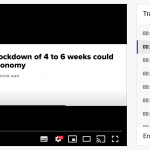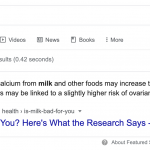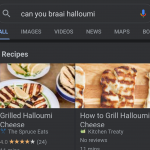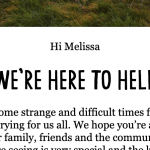When optimising a website for search, a lot of attention is usually lavished on the title tags and meta descriptions that will represent each page on the search engine results page (or SERP).
And rightfully so. These few lines of text, the blue linked title tag the meta description underneath, are both a means of validating a search result and inviting the user in.
But there’s further opportunity to be explored when optimising search result entries: setting expectations.
For example, a title tag and meta description can give the searcher a sense of whether the service will be in their price range or give them a preview of shipping costs, like the Milk Bar have done on their title tag.

The UK train company Greater Anglia used their home page search result entry to shape traveller expectations during the peak of travel restrictions as part of the COVID-19 measures. Customers were cautioned to only travel when necessary and adhere to safety guidelines.

Their competitor, Southeastern did not.

Might lead to a reduction in traffic but quality is likely to increase.
Using the title tag and meta description to set expectations could lead to a lower click through rate, as some searchers could decide to bypass the result based on the additional information contained in it. Maybe the shipping flat rate is too much. Or the bridal boutique is outside of their price range.
On the flip side, this screening process usually means those searchers who do click through to the site are more likely to find what they need. Hello reduced bounce rate, increased dwell time, pages per session, etc.
Greater Anglia might have experienced a reduction in traffic compared to Southeastern, who continued to emphasise affordability. Bit it’s likely that the latter’s engagement metrics suffered as visitors realised they couldn’t travel anyway and left the site.
Approach with some caution.
For websites where services or products are featured on additional landing pages which have been optimised for non-branded search, the home page can usually safely be altered, as long as the brand name remains in it.
But this approach may be a bit riskier for single-service websites where the home page also attracts a large portion of the site’s non-branded traffic. In such cases it would be safer prioritise retaining the main keywords in the title tag and meta description to ensure the results are as relevant as possible.







Comments by Melissa Byleveld